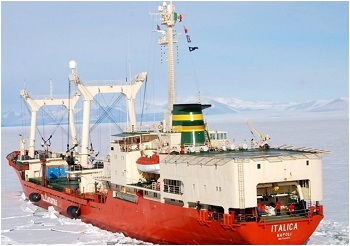Let's talk about lab water
Let's talk about lab water

The Antarctic is a hugely beneficial resource in this endeavor. Ice cores taken from this pristine environment can serve as direct historical records that we can analyze to determine atmospheric constituents, such as CO2, CH4 and Hg. Antarctic ice cores can extend to over 3 km in depth, equating to around 800,000 years into the past!
The CNR Institute for the Dynamics of Environmental Processes (CNR-IDPA), and the Department of Environmental Sciences, Informatics and Statistics at the Università Ca’ Foscari in Venice, Italy, who specialize in the analysis of ultra-trace levels of substances in environmental matrices, undertook a six-month expedition to the Antarctic in November 2011.

The scientists sampled air, water and snow and made use of highly sensitive analytical equipment (e.g. inductively coupled plasma sector field mass spectrometry coupled with a microflow nebulizer and a desolvation system) to determine trace element concentrations down into sub-picogram concentrations – that’s less than a trillionth of a gram! The analysis included detecting and determining the concentrations of pollutants of particular concern.
In order to be sure they were detecting real trace deposits made hundreds of thousands of years ago, it was imperative that the scientists had a reliable source of ultrapure water in order to avoid contaminating their samples. The low density polyethylene bottles used to hold the samples were washed with large volumes of Type I ultrapure water, triple bagged and heat sealed, ready to be used on site. The boat itself was even equipped with an ELGA PURELAB flex 3 to provide ultrapure water on-demand, which was easy to fit on board thanks to its flexible, space-saving design.
The expedition to the Antarctic concluded in April 2012 with hundreds of samples in tow ready for analysis, the likes of which will help to provide important insights into climate change. The use of high grade reagents in the study meant that the scientists could be confident that the samples and data they had spent months collecting were as robust, accurate and reliable as possible.
For everyone working with highly sensitive analytical techniques, it’s vital that your work can proceed without fear of contamination. Any reason to doubt the accuracy of your data can end up with you having wasted your precious time and resources. This is every researcher’s fear – especially when you have travelled to the ends of the Earth to collect your samples!
Find out more about how the team at CNR-IDPA unlocked the secrets of the Antarctic with ultrapure water.